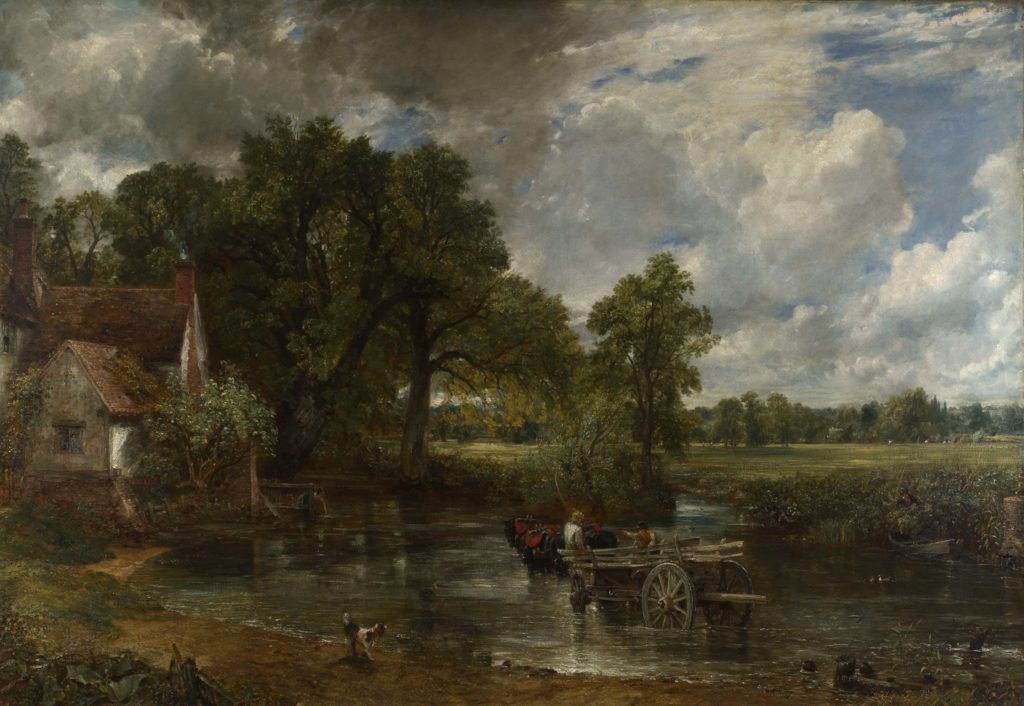Romanticism and Nostalgia: The Modern Condition
I believe that to be passionate about landscapes, you must inevitably also be a romantic. Yet, being a romantic means being stuck in paradoxes: to desire authenticity in an illusive world, to yearn for individualism through connectedness; and to find pleasure in the act of mourning. These paradoxes stem from the melancholic contradictions found in modernity. As a sentimental landscape lover, I am inevitably a romantic, but I don’t like being stuck in unproductive cycles. So I often consider myself as a romantic learning to be a Daoist: learning to appreciate the beauty of landscapes; learning to use passion productively; and learning to let go of attachments to old stories of guilt and resentment.
An older version of this post was originally published in an old blog from 2017.
Romanticism: Not about love but about rejection?
Calling someone a romantic can either be a complement or an insult. For instance, your significant other may want you to be romantic: to be expressive, loving, and affectionate. But family members, colleagues, or strangers who do not appreciate your sentimental view towards life would consider your romanticism as “unrealistic”, “irrational”, or “over-sentimental”.
Although we often associate romance with love and relationships, the history of romance is a stretch from this present-day meaning. The origin of the word “romance” comes from the medieval languages that derived from Latin, including French, Spanish, and Italian. Stories of chivalry, adventure, knights in shining armor, and damsels in distress appeared in these romantic languages. Therefore, notions of drama, passion, fantasy, and beautiful settings became associated with romance.
The Romantic era (c. 1770-1850) was a time of such passion and adventure in the Western world of philosophy and art. As a reaction to the seemingly over-rationality of 18th century Enlightenment, Romanticism was the fierce rejection against all that was mechanical and regimented. Romanticism was a movement to renew the wonders of human life by bringing back sentimental passions, individuality, and subjective freedom.
Metaphorically, the Romantics saw themselves as heroes, just like the medieval knights, braving through the repressions of society. Parallel to the artistic and intellectual impulse to break free was also the social and political instability of the French Revolution. Therefore, concepts of death, destruction, and the transience of power were relevant to Romantic art and literature.
German and English Romanticism
Earlier Romanticism in German literature was characterized by extreme individualism and dramatic feelings in the movement of Sturm und Drang (Storm and Stress). Although the German Romantics (e.g., the Schlegel brothers, Schleiermacher, Novalis, Schelling, Fichte, Goethe, and Hegel) were not homogeneous in their philosophies, they had a common interest. They wanted to understand humanity’s inner and external nature, and the spiritual relationship between the two.
If we were to define romance according to the German Romantics, it would mean “whatever shows us a sentimental subject in fantastic form … Everything that speaks to our sentiment—not our sensual, but our spiritual sentiment” (Friedrich Schlegel qtd. in Schrade 1977, 7).
On the other hand, English Romanticism was less about drama. Instead, this version of Romanticism was about the sentimentality for the material aspect of the natural world. In comparison to the German’s mysticism of nature, the English Romantics’ version of nature was personal and familiar. From the poems of William Wordsworth to the paintings of John Constable, nature was something very close to home.
What though the radiance which was once so bright
William Wordsworth, Ode: Intimations of Immortality from Recollections of Early Childhood
Be now for ever taken from my sight,
Though nothing can bring back the hour
Of splendour in the grass, of glory in the flower;
We will grieve not, rather find
Strength in what remains behind…

Nostalgia: the modern paradox of Romanticism
The interesting part of Romanticism is its basis on a fundamental paradox: the simultaneous desire for individualism and a connectedness to a world that is both material and metaphysical. The Romantic is in search of truth, authenticity, and personal identification with their place in the world, yet they can never be fully satisfied because of their own subjectivity:
…in turning to personal experience one forgoes the security of an established belief system with which to make sense of the world and exposes oneself to whatever comes. It means becoming a perpetual outsider. The gain for the individual is the experience itself and the continual surprise of existence. The Romantic is a constant beginner in life, always learning, never content to be instructed by others. (Evernden 1986, 31)
Consequently, the Romantic will often search for connectedness in another realm: the imagination, the past, or a utopian future.
The Romantic desire is distinctly modern. According to Bruce Braun (2002), “To be modern is to mourn; we preform ourselves as modern by mourning” (137). As moderns, we are instinctively aware of some sort of loss in our world. At the same time, we are constantly trying to catch up with the opposing direction of “progress.” These states of progress, consciously or subconsciously, become part of what we deem as modernity’s destruction and the cycle of mourning continues. Our mourning for a particular, and paradoxically undefined, place and time is a case of nostalgia.
Imperialist nostalgia and tourism
“Imperialist nostalgia”, according to Renato Rosaldo, is the hypocritical and self-inflicted mourning created by cultural dominance. Imperialist nostalgia is present in colonialism and the modern worship of nature. For example:
A person kills somebody, and then mourns the victim. In more attenuated form, somebody deliberately alters a form of life, and then regrets that things have not remained as they were prior to the intervention. At one more remove, people destroy their environment, and then they worship nature. (Kaplan 1996, 34)
Imperialist nostalgia is associated with modern mass-popularized tourism. Caren Kaplan suggests that imperial nostalgia is a narrative represented by the colonizer (i.e. the victor) as the search for the “pure” and “simple” “elsewhere,” whether in another historical period or through other cultures. Traveling to a distant locale is an activity that a modern person can use to remedy the sense of displacement caused by imperialist nostalgia.
Displaced nostalgia and landscape images
Another common way that a modern person copes with imperialist nostalgia is through landscape imagery. “Displaced nostalgia”, according to S.W. Naguib (2010), is the yearning of a place that one has never experienced but has generated a sense of familiarity and attachment due to repetitive exposure, usually in the form of landscape images. These landscapes are dream-like and a-temporal, giving off a harmonious ambience.
Postcards, travel brochures, calendar images, photo-collections (and now Instagram and other social media images) reinforce nostalgia through idealized landscape images. Even more effective than landscape paintings, landscape photographs make big impressions in our implicit memories. Details captured within the picture frame allude to some sort of evidence—not just evidence captured by the photographer—but a kind of evidence that we assume in ourselves. Photographs imply a (potentially false) truth.
Although the idealized past or the utopian future we desire may not be real, the emotions of longing and admiration that accompany these images are true, making the cycle of nostalgia all the more enticing.

Accepting modernity and releasing the guilt of imperialist nostalgia
As a post-colonial theory, imperialist nostalgia is fitting to describe the cultural phenomenon of modernity. But as a personal narrative, imperialist nostalgia is hard to swallow.
Imperialist nostalgia is sustained by guilt. Therefore, I consider imperialist nostalgia a theory of self-condemnation. But perhaps, self-condemnation is a characteristic of modernity? If the mourning of loss is apparent and the solution is not available, what else can we do other than focus on regret? As much as I understand this course of thinking, I don’t agree with it.
Self-condemnation and regret (internalized as part of collective humanity or externalized as blame towards a portion of humanity) is like throwing the “baby out with the bathwater,” oblivious to the new life ready to be nurtured in our collective loss, whether that is authenticity, connectedness, autonomy, passion, etc. Over the years, I’ve realised that feeling guilty for my “romantic” yearning for place, for timelessness, for connectedness with people and with nature, will not support new life.
Therefore, I don’t find nostalgia anything to be shameful of. When we are nostalgic, we intuitively know that there is a reality that is better than what exists now. But to make nostalgia work for us, we need to break out of the cycle of guilt and the perverse pleasure of mourning so that we can actually do something about this yet-to-be-manifested reality.
Romanticism, whether towards landscapes or life in general, has so much inspiration to be harnessed—curiosity, courage, passion, and wonder—all supportive of new life. The key is to turn Romanticism’s initial rejection of modernity and the drama that comes with it, into an authentic love for life and world.
This love already exists within us, or else we wouldn’t know any better than to be a Romantic.
References:
- Braun, Bruce. 2002.The Intemperate Forest: Nature, Culture, and Power on Canada’s West Coast. Minneapolis: University of Minnesota Press.
- Evernden, Neil. 1986. The Natural Alien: Humankind and the Environment. Toronto: University of Toronto Press.
- Kaplan, Caren. “‘This Question of Moving’: Modernist Exile / Postmodern Tourism,” in Questions of Travel: Postmodern Discourses of Displacement. Durham, NC: Duke University Press, 1996.
- Naguib, Saphinaz-Amal Williksen. 2010. “Egypt in View: Postcards of Nostalgia,” in Reveries of Home: Nostalgia, Authenticity and the Performance. Edited by Solrun Williksen and Nigel Rapport. Newcastle: Cambridge Scholars.
- Schrade, Hubert. 1977. German Romantic Painting. New York: H.N. Abrams.